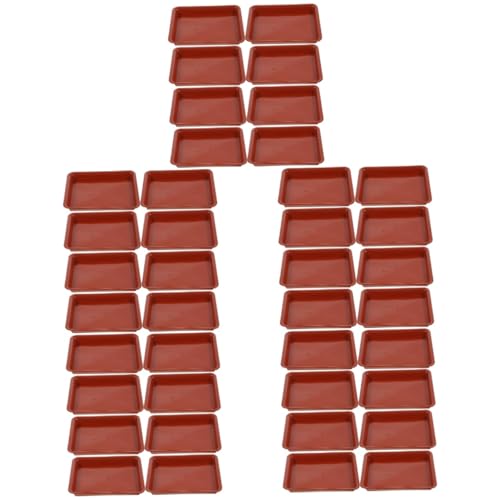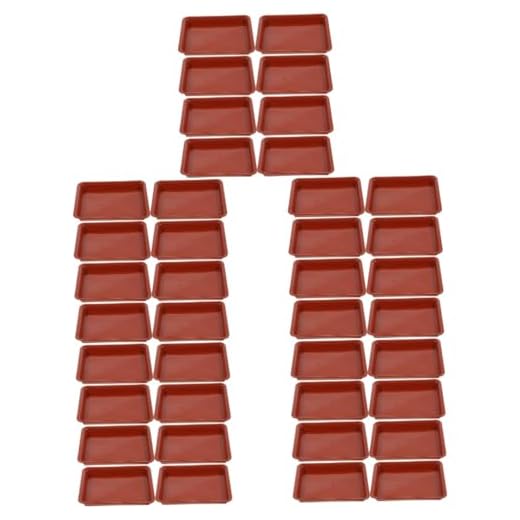


When it comes to caring for your bonsai tree, there are several important factors to consider, especially when you are planning to be away for an extended period of time. One of the crucial questions that bonsai enthusiasts often ask is whether it is advisable to leave their bonsai tree in the shade when they are not around to provide direct sunlight.
The answer to this question depends on various factors, including the specific species of bonsai tree you have, the climate in your area, and the duration of your absence. It is important to understand that bonsai trees, like any other plant, require light for photosynthesis, which is crucial for their growth and overall health.
While it may seem logical to place your bonsai tree in the shade to protect it from excessive heat and potential damage, leaving it in complete shade for an extended period of time can have negative consequences. Without adequate sunlight, the bonsai tree may become weak, lose its vibrant colours, and its foliage might start to wither.
Benefits of leaving bonsai in shade
Leaving your bonsai in shade can provide several benefits for its health and overall well-being. Here are some reasons why shade can be advantageous for your bonsai:
-
Reduced risk of sunburn
Excessive exposure to direct sunlight can cause sunburn to your bonsai, leading to the leaves turning brown or scorched. Placing your bonsai in shade can protect it from these harmful effects and keep its foliage healthy.
-
Prevention of dehydration
Shade helps to reduce water loss from the soil through evaporation, preventing your bonsai from drying out too quickly. This can be especially beneficial during hot summer months or when you are away for an extended period and unable to water your bonsai frequently.
-
Controlled growth
By placing your bonsai in shade, you can slow down its growth rate. This allows you to maintain its desired shape and size without the need for frequent pruning. Shade also helps to prevent excessive elongation of branches and encourages more compact and dense growth.
-
Reduced stress
Shade provides a cooler and more stable environment for your bonsai, minimizing stress caused by extreme temperatures. This can contribute to better overall health and vitality, and reduce the risk of pests and diseases.
-
Protection from strong winds
Leaving your bonsai in shade can offer protection from strong winds, which can damage or break delicate branches. This is particularly important if you live in an area prone to strong gusts or if you are leaving your bonsai unattended for an extended period.
Overall, providing shade for your bonsai can have various benefits and help ensure its well-being even when you are away.
Maintaining optimal moisture levels
When it comes to taking care of your bonsai while you are away, maintaining optimal moisture levels is crucial. Bonsai trees require a careful balance of moisture to thrive, and too much or too little water can be detrimental to their health.
Before leaving, make sure to thoroughly water your bonsai tree so that the soil is evenly moist. This will help to prevent it from drying out too quickly while you are away.
One method to maintain moisture levels in your bonsai is to use a humidity tray. A humidity tray is a shallow tray filled with water that you can place your bonsai pot on top of. As the water evaporates, it creates a more humid environment around the tree, preventing the soil from drying out too quickly.
Another option is to use a self-watering system. These systems consist of a reservoir of water connected to the bonsai pot through a wick or tube. The plant will draw water from the reservoir as needed, ensuring that it remains hydrated even when you are not around.
Monitoring moisture levels
It is important to regularly check the moisture level of the soil while you are away. Stick your finger about an inch into the soil to check if it feels dry or moist. If it feels dry, it is a sign that the bonsai tree needs water.
Seeking help
If you are going to be away for an extended period of time and are concerned about the care of your bonsai tree, consider asking a friend or family member to help. They can water your tree and ensure it receives the proper care while you are away.
Protection from harsh sunlight
One of the most important aspects of caring for bonsai trees is protecting them from harsh sunlight. Direct sunlight can cause damage to the delicate leaves and branches of the bonsai, especially during hot summer months.
To provide shade for your bonsai when you are away, you can place it in a shaded area of your garden or yard. This can be under a tree or in an area with a canopy that provides some protection from direct sunlight.
| Benefits of providing shade: |
|---|
| – Prevents burning of leaves and branches |
| – Reduces water loss through evaporation |
| – Helps maintain optimal temperature |
| – Protects against overheating |
Another option is to use shade cloth or a shade netting to create artificial shade. These materials can be placed over the bonsai to filter the sunlight and reduce its intensity. Make sure to secure the shade cloth properly so that it doesn’t blow away in strong winds.
It is important to note that while shade is necessary, bonsai trees still require some sunlight to thrive. Therefore, it is important to find a balance between providing enough shade and allowing some sunlight to reach the bonsai. If you are unsure about the amount of shade your bonsai needs, it is recommended to consult a bonsai expert or do some research specific to your bonsai species.
Prevention of leaf burning
If you are planning to leave your bonsai tree in direct sunlight while you are away, it is important to take measures to prevent leaf burning. Leaf burning occurs when the sun’s rays are too intense, causing the leaves to become scorched and damaged. This can not only harm the appearance of your bonsai, but it can also affect its overall health and vitality.
Here are some steps you can take to prevent leaf burning:
| Step | Description |
|---|---|
| 1 | Move your bonsai to a shady location: If possible, find a spot in your garden or home that receives indirect sunlight or dappled shade. This can help protect your bonsai from the direct rays of the sun and reduce the risk of leaf burning. |
| 2 | Use a shade cloth: If you don’t have a suitable shady spot, consider using a shade cloth to filter the sunlight. These cloths are designed to block out a certain percentage of the sun’s rays, helping to protect your bonsai from excessive heat and light. |
| 3 | Water your bonsai properly: Proper watering is essential for the health of your bonsai, especially when it is exposed to intense sunlight. Make sure to keep the soil moist, but not overly saturated. This can help to cool the roots and prevent the leaves from drying out and burning. |
| 4 | Monitor the temperature: Keep an eye on the temperature in the area where your bonsai is located. If it is getting too hot, consider moving it to a cooler spot or providing additional shade. |
By following these prevention measures, you can help to ensure that your bonsai remains healthy and vibrant, even when you are away and unable to provide direct care.
Reduction of water loss
When leaving your bonsai in the shade during your absence, it is essential to reduce water loss to ensure the health and vitality of your tree.
1. Watering: Before leaving, make sure to thoroughly water your bonsai. This will provide the tree with enough moisture to withstand the period of being in shade. However, be cautious not to overwater, as this can lead to root rot.
2. Saucers: Placing your bonsai on a saucer filled with water can help create a humid microenvironment around the tree. The water in the saucer will slowly evaporate, increasing the humidity and reducing water loss through transpiration.
3. Mulching: Adding a layer of organic mulch around the base of your bonsai can help retain moisture in the soil. Mulch acts as a barrier, preventing evaporation and reducing water loss. It also provides insulation, protecting the roots from extreme temperatures.
4. Pruning: Before leaving, consider pruning the foliage of your bonsai to reduce water loss through transpiration. Removing excess leaves and branches will decrease the surface area available for water evaporation, helping the tree conserve moisture.
5. Positioning: Place your bonsai in a location with indirect light and good air circulation. Avoid placing it near heaters, drafty windows, or air conditioning vents, as these can cause rapid evaporation and further increase water loss.
6. Covering: If possible, consider covering your bonsai with a lightweight, breathable fabric or shade cloth. This will provide additional protection from direct sunlight, reducing water loss through excessive heat and radiation.
By implementing these measures, you can significantly reduce water loss and ensure the well-being of your bonsai during your absence in the shade.
Minimization of Stress During Absence
Absences can be stressful for any living organism, and bonsai trees are no exception. However, there are measures that can be taken to minimize stress and ensure the well-being of your bonsai tree while you are away.
1. Watering
Watering is crucial for bonsai tree survival, especially in the absence of their caretaker. Before leaving, make sure to thoroughly water your bonsai tree, ensuring that the soil is moist but not waterlogged. This will provide the tree with enough moisture to sustain it during your absence.
If you will be away for an extended period of time, consider using a self-watering system or asking a trusted friend or neighbor to water your bonsai tree as needed. This will help to ensure that the tree receives sufficient water and reduces the risk of drying out.
2. Light Exposure
Proper light exposure is essential for the health of your bonsai tree. When leaving your bonsai tree unattended, place it in a location where it will receive adequate light without being exposed to direct sunlight. Too much direct sunlight can cause the tree to dry out or suffer from heat stress.
If you are unsure about the light requirements of your specific bonsai tree species, it is recommended to consult a bonsai expert or refer to specific care instructions for guidance on light exposure during your absence.
3. Temperature
Maintaining an appropriate temperature is important for the well-being of your bonsai tree. Avoid placing your bonsai tree in an area that experiences extreme temperature fluctuations, as this can cause stress and potentially harm the tree.
If you will be away during a particularly hot or cold period, consider placing your bonsai tree in a temperature-controlled environment or taking additional measures to protect it from extreme temperatures.
4. Pests and Diseases
Pests and diseases can quickly take hold of a bonsai tree when left unattended. Before leaving, thoroughly inspect your bonsai tree for any signs of pests or diseases and take appropriate action to mitigate the risk.
If you have a trusted friend or neighbor who is knowledgeable about bonsai care, ask them to check on your tree periodically and address any pest or disease issues that may arise.
By taking these precautions and ensuring that your bonsai tree receives proper care and attention, you can minimize stress and help ensure its well-being during your absence.






